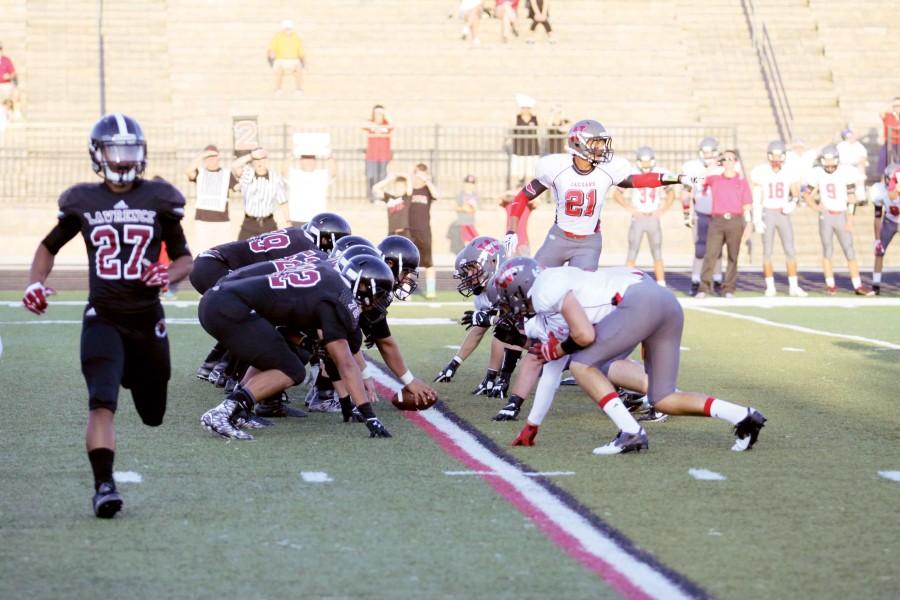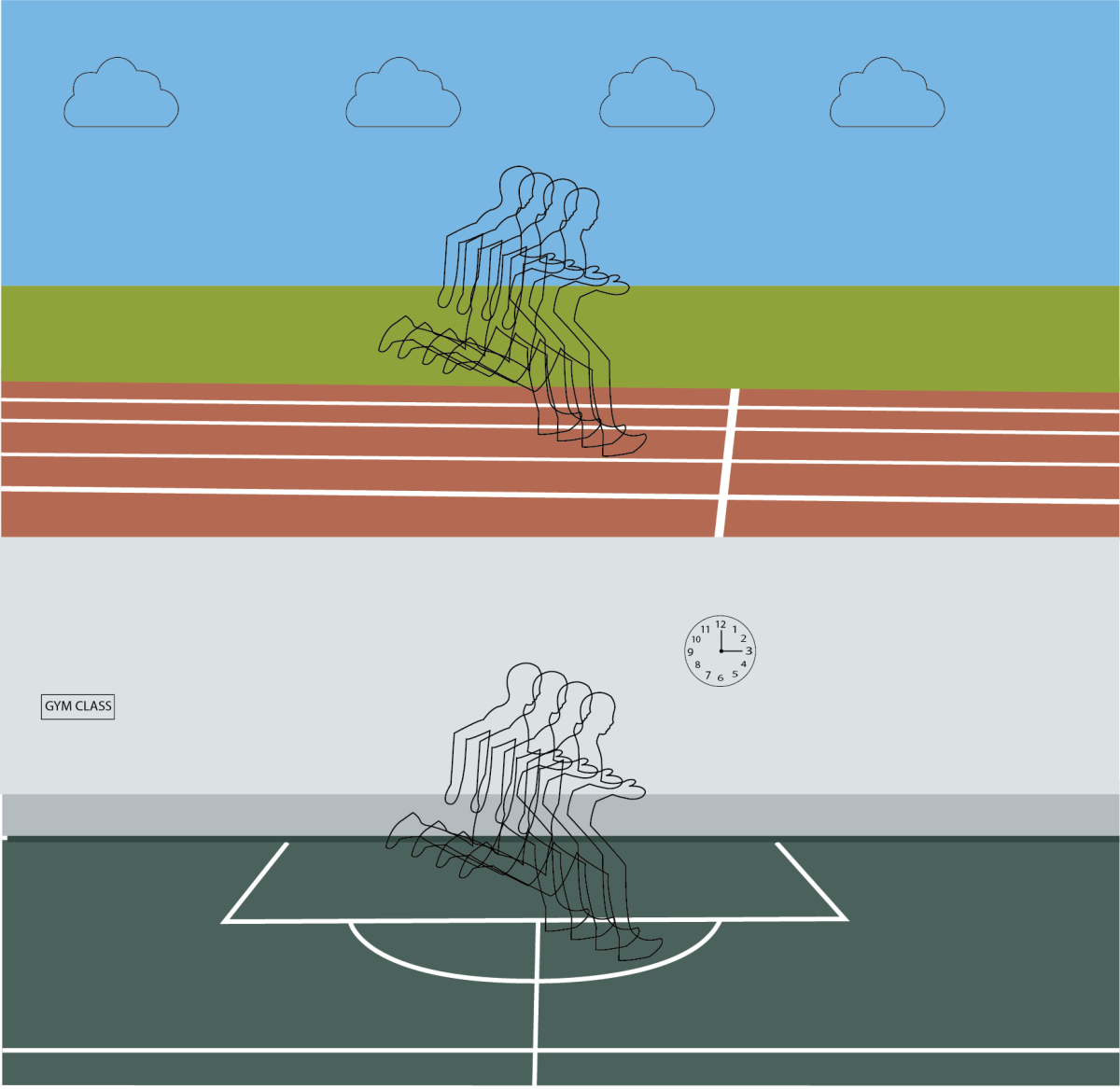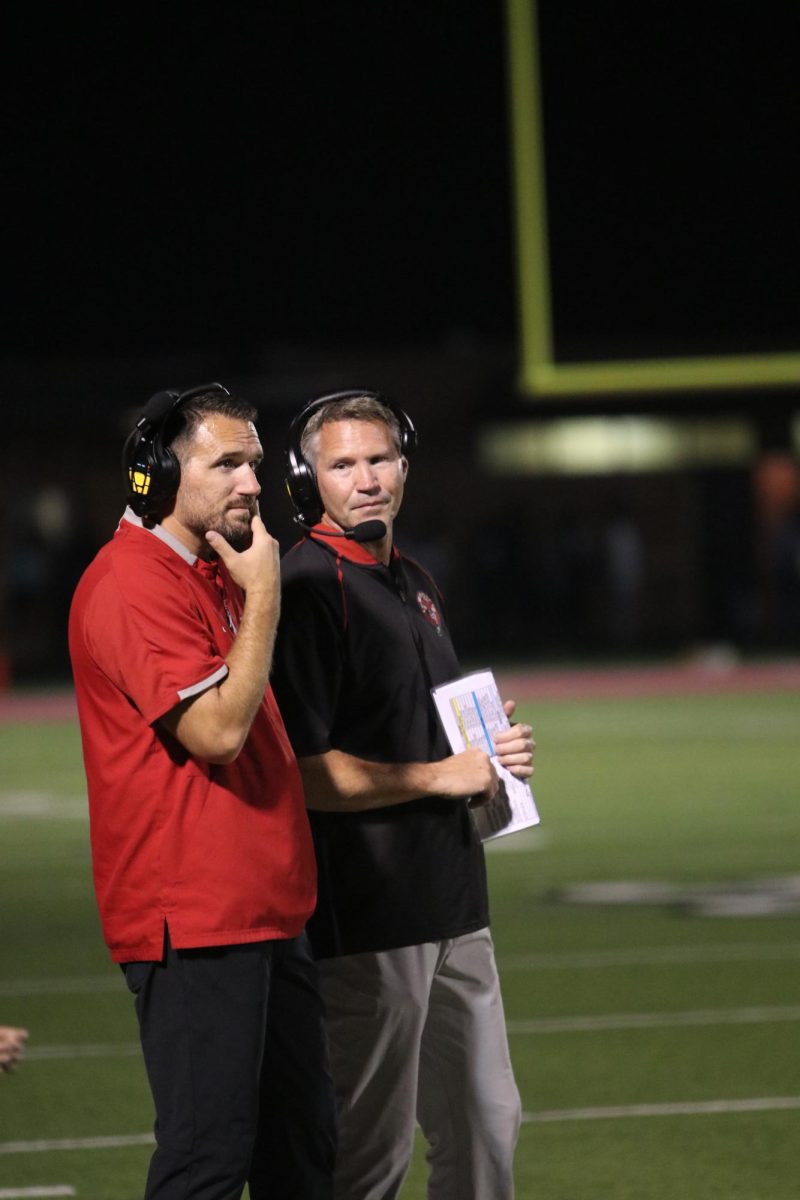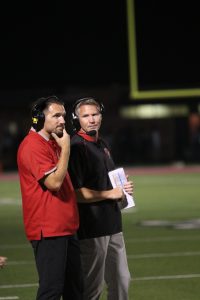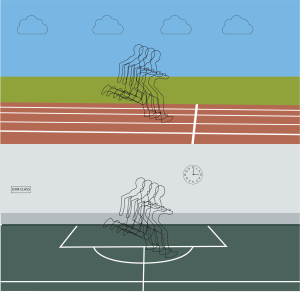New regulations to protect players
National rule changes come to football program
Players line up for the first home football game Sept. 4. Recent changes in regulations have limited the amount of contact time in practices and have forbidden the scheduling of two consecutive games.
October 7, 2015
Fewer contact drills and more awareness of concussions are bringing changes to the football program.
The latest changes follow similar moves in recent years to attempt to reduce concussions in the sport. This year, that means changes at practices and new game rules.
“We’ve got to do whatever we can to protect our kids,” athletic director Bill DeWitt said. “We have to make it a safe sport, and we have to protect our sport. There’s a lot of people that think there’s too much hitting and there’s a lot of concussions and now the science is saying if you don’t take concussions seriously enough you can have long term effects. It’s an adjustment for a lot of people, but every school is having to do it so we all have the same adjustment.”
Concussions have become a nation-wide hot topic since the NFL has faced scrutiny over its players long-term health problems, which have been tied to concussions.
This year, the National Federation of State High School Associations (NFHS) Football Committee issued new guidelines concerning concussions. The NFHS required high schools change their preseason football routines in order to reduce any risks of concussions happening before the regular season began.
“They’ve limited the amount of live contact we can do to 90 minutes a week,” DeWitt said. “It’s changed what we do at Lawrence High, starting with different drills and having the players play to the whistle.”
Sophomore Ekow Boye-Doe, a football player, said coaches brought in a speaker to show players how to have a more protective stance and safer tackles.
“We all still go as hard as we can,” Boye-Doe said. “We just know to be safer because of the importance of concussions.”
Head football coach Dirk Wedd said this isn’t the first time the school has addressed concussions.
“All our freshman take a baseline test before the season so if they do get a concussion during their career, the doctors can use that baseline for rehab,” he said.
The baseline test is taken again to assess whether the athlete’s brain is in the same condition it was in before that concussion first occurred so it is clear whether or not they should be playing again.
The goal, however, is that they don’t get concussions in the first place.
A few specific changes related to the increase in concussions that have been made include:
- Spearing definition revised. The rule now states it is “an act by any player who initiates contact against an opponent at the shoulders or below with the crown (top portion) of his helmet.” The “Targeting” rule implemented last year relates to all helmet hits above the shoulders, and the new “Spearing” now declare all helmet hits below the shoulders illegal, forcing defensive players to tackle with their heads up.
- Updated unnecessary roughness to include defenseless player and added excessive contact. This new rule helps eliminate all hits that are deemed to bring “roughness” to a defenseless opponent.
The combined changes are focused on player safety.
“Maybe at one point we used to tell people to be tough, but you can’t play with a concussion,” DeWitt said. “We need to get them off the field if they’ve got one.”



